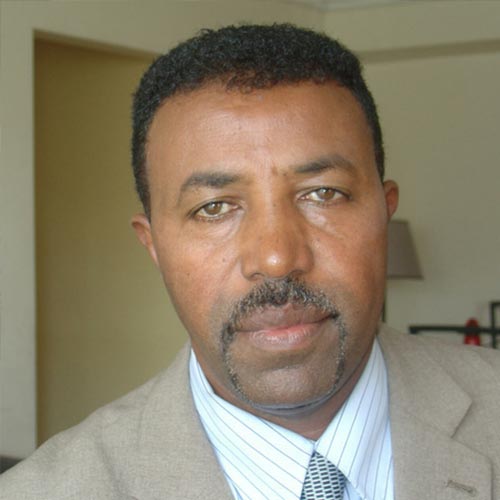Experts and policymakers make the case for Ukraine in a series of RDI talks in Prague and Berlin

What can civil society leaders and public officials do to bring about a Ukrainian victory?
That was the topic of conversation in a series of roundtable discussions in Prague and Berlin that RDI hosted in partnership with American Purpose in late February and early March. We were joined by defense officials from across Europe, journalists from former Soviet states, political officials, former ambassadors, and military analysts.
Hopes for Ukraine were high, but with a healthy sense of concern. On the one hand, Ukrainian forces have proven themselves extremely capable and support from Western countries remains strong. On the other hand, supplies promised to Ukraine months ago are arriving too slowly and a decisive Ukrainian victory isn’t in sight yet. Ukraine is holding, but Ukrainians need more help to completely free their country from Russian occupation.
To condense dozens of hours of conversations into a few points, here are a six things to know:
1. New leaders are emerging in European affairs
The war in Ukraine has revealed the shortcomings of relying on Paris and Berlin to lead European policy and command the focus of American diplomacy. While the French and German governments deserve credit for their progress on defense policy, at times over the past year they have been naive, overly cautious, and out of step with the rest of Europe.
In sharp contrast, nontraditional power centers have emerged as the shining lights in European defense. In Central, Eastern, and Northern Europe, countries have acted many steps ahead of Germany and France. They have provided more and better military aid and are uncompromising in their policies toward Putin. In many cases, these countries lived under Russian military occupation from the end of the Second World War until the collapse of the Soviet Union. They know the Russian threat, and they never demilitarized like their Western European counterparts.
If it’s a revolution in foreign affairs, it’s a slow burning one. The sense is that the US State Department is still accustomed to doing business with Berlin and Paris first, which is a missed opportunity. Where the traditional power centers of Europe have lagged, our allies elsewhere in Europe have led.
2. Munition stocks are frustratingly low
Our first day in Berlin, Ukrainian tank commanders joined us just days after leaving the frontlines. They painted the picture of an army undefeated but under-resourced. They described days where neither side used significant artillery, allowing stockpiles to build before one side reopened fire.
Some supply problems aren’t likely to improve anytime soon. Before the war, many European countries allowed their militaries to atrophy. Germany, according to one estimate, has enough ammunition stockpiled to last just two days during a war. Even the United States can’t keep up. While Ukraine can burn through 5,000-6,000 155mm artillery shells in a single day, the US currently produces just 14,000 a month. The US is similarly limited in its supplies of M777 howitzers, Stinger and Javelin missiles, and HIMARS launchers.
While production levels are set to increase, it will take time. Ukraine is not at risk of running out of ammunition as ongoing production will guarantee a steady albeit modest supply, but any additional ammunition that countries can provide to aid Ukraine would be put to immediate and effective use. Facing their own shortages, the Russians are tapping into Iranian and North Korean stocks.
3. New equipment deliveries could supplement shortages
Western countries have weapons systems they could supply to Ukraine but have so far refused, such as F-16 jets and ATACMS––missile systems with a range of 190 miles that would enable Ukraine to strike ammunition stockpiles and command centers behind the frontlines.
Three arguments have prevented the transfer: Ukrainian forces don’t know how to operate the systems, the Ukrainians may use them to strike deep into Russia, and Putin may respond with extreme escalation.
Over the course of the last year, each argument has proven misguided. The Ukrainians are adaptable and reliable, so we have no reason to doubt them. As for Putin’s redlines, the same argument slowed the delivery of many other systems, yet once they were delivered the response from Moscow was muted. A bipartisan group of US Senators are now lobbying to provide Ukraine with F-16s, recognizing a critical component in enabling combined arms operations that could break the stalemate.
4. European defense is being remade
In nearly every conversation we had, the Europeans we spoke to referenced the shifts in defense policy that their countries are undertaking. Europe’s post-Cold War slumber is over, and they’re taking defense seriously. Germany’s foreign policy watershed moment, the Zeitenwende, is incomplete yet very much real. Finland and Sweden remain on the path to NATO membership. The Baltic states are increasing defense spending to 3 percent of GDP. In all, 29 European countries pledged new defense spending in 2022 totaling more than $209 billion.
5. Small, often overlooked countries are at risk
With the Russian army facing more than it can handle in Ukraine, large and well defended European countries have little reason to fear a Russian invasion anytime soon. The greatest short term risk is murky operations in smaller countries where Russia has a history of interference––places like Moldova, Slovakia, and the Western Balkans.
Moldova is a country of just 2.6 million and shares a 750-mile long border with Ukraine. Upon Moldova declaring independence from the Soviet Union in 1991, Russian-backed separatists formed the breakaway state of Transnistria. There, some 1,500 Russian troops bolster the renegade military and threaten Moldova’s security. In February, Ukrainian President Zelensky announced that Ukraine had intercepted Russian intelligence planning a coup in Moldova.
The specter of Russian meddling isn’t contained to Moldova. In Slovakia, Russian disinformation campaigns seek to blame the EU for rising energy prices and instability, while disregarding the war in Ukraine as anti-Russian hysteria. In the Balkans, Russia is waging cyberattacks and disinformation campaigns to strengthen its influence and divide Europe, according to NATO officials.
6. 2023 is pivotal
The sense that time is of the essence pervaded every conversation. While most people were convinced their country would maintain a high level of support for Ukraine through 2023, not everyone was so confident about what 2024 would bring.
In the US in particular, the presidential election cycle threatens to shift attention away from Ukraine. Right now, Congressional Republicans remain largely supportive of Ukraine, though grassroots support is dropping fast. Troublingly, Republican presidential frontrunners Donald Trump and Ron DeSantis have aligned against Ukraine. While both remain on the fringes of elected Republicans with their Ukraine policy, presidential campaigns tend to set the agenda for the rest of the party. If either successfully wins the nomination, they could pull Congressional Republicans into an anti-Ukraine position.
More generally, an economic downturn, stagnant frontlines, diminished weapons stores, and public fatigue all risk diminishing public support for Ukraine across the Western world. There’s no guarantee that any of these scenarios will play out, but just one of them could affect the outcome of the war.
Western governments must commit now to providing Ukraine with the equipment they can to make 2023 the year of Ukrainian victory. With public support for Ukraine high and conditions favorable for a Ukrainian counteroffensive in the late spring and early summer, time is of the essence.



